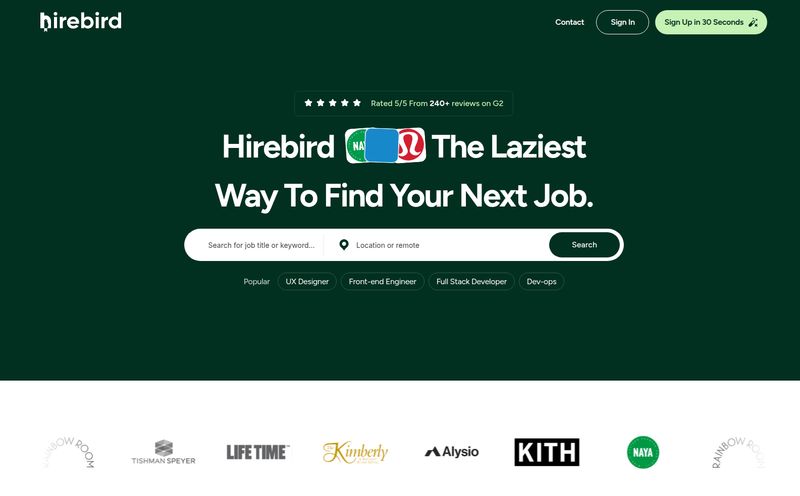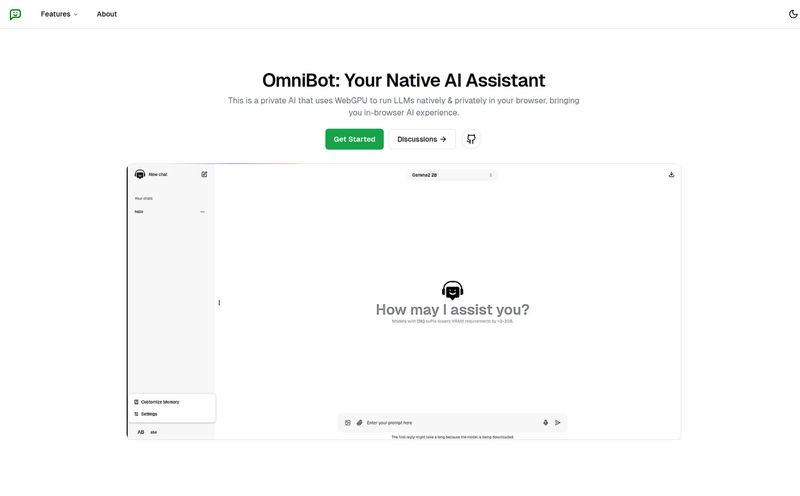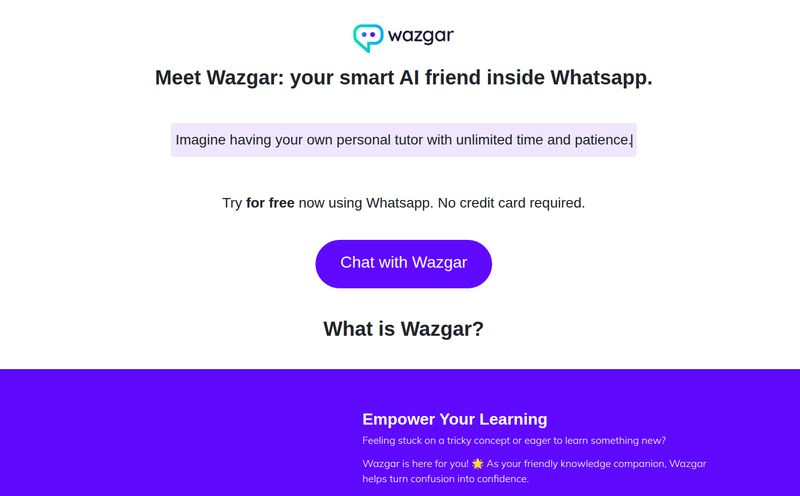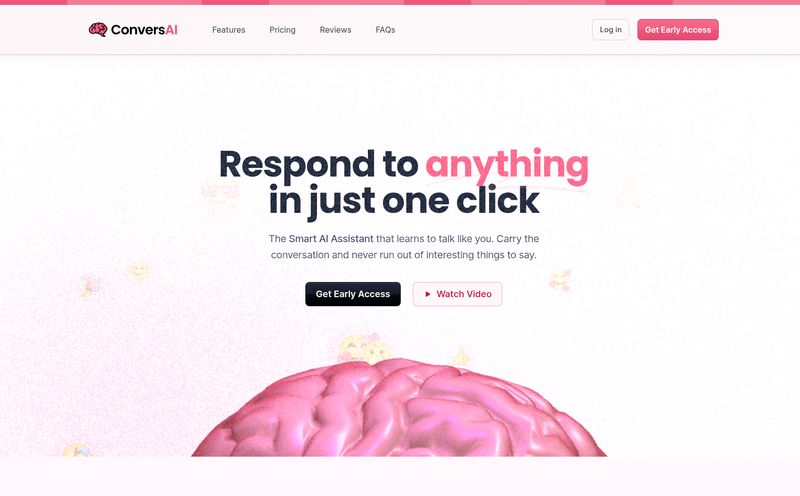When was the last time you were genuinely excited about a mandatory corporate training module? I’ll wait. For most of us, the words “corporate learning” conjure images of clunky, one-size-fits-all slideshows, followed by a quiz we click through as fast as possible. It’s a box-ticking exercise. A necessary evil.
For years, we in the L&D and performance space have talked a big game about personalization and engagement, but the tools have often felt… well, stuck in 2010. So when a company like Sana comes along, making audacious claims about using AI to help teams perform “10x faster,” my professional skepticism kicks in. But so does my curiosity.
Sana, a sleek AI company out of Stockholm, Sweden, isn't just another Learning Management System (LMS). They’re positioning themselves as a fundamental shift in how companies share knowledge. And with big names like Strava and Robinhood on their client list, and AI titans like Geoffrey Hinton and Andrew Ng featured on their site, you have to wonder: are they onto something big? Or is it just another pretty interface with a chatbot bolted on? Let's get into it.
What Exactly is Sana? More Than Just Another LMS
First things first, calling Sana an LMS feels like calling a Tesla a golf cart. It technically moves people, but you're missing the entire point. Sana bills itself as an “AI-powered learning platform,” but I think it’s better described as a centralized knowledge engine for your entire organization.
Imagine taking all your company’s scattered knowledge—your Google Docs, your Slack conversations, your Notion wikis, your video recordings—and pouring it into one intelligent system. A system that can not only find information with a Google-like search but also proactively turn that information into interactive, engaging training. That’s the core promise.
It's built on a foundation of AI designed for “human growth,” which sounds a bit like marketing fluff, but after digging in, there’s some real substance there. It's about moving from passive consumption (reading a doc) to active, adaptive learning. And frankly, it's about time.
The Core Features That Actually Matter
A platform is only as good as its features, right? I've seen countless tools with shiny dashboards that fall apart once you try to actually do something. Sana’s feature set, however, seems impressively cohesive. It’s all built around a central, AI-driven workflow.
AI-Powered Content Creation (Your SME's New Best Friend)
This is probably the biggest showstopper. The traditional bottleneck in creating course content is, well, creating it. It takes subject matter experts (SMEs) away from their jobs and requires instructional designers to translate that knowledge. Sana flips that on its head. You can feed it a document, a presentation, or even a website link, and its AI assistant gets to work, generating an entire course with quizzes, summaries, and interactive elements. It’s like having an instructional designer on staff who works 24/7 and never asks for a coffee break. Of course, it needs human review—AI isn't perfect—but it takes you from zero to 80% in minutes, not weeks.
A Truly Personalized Learning Path
Here’s where the “adaptive learning” buzzword becomes real. I've sat through so many mandatory trainings that felt like they were written for a completely different department. Sana uses its AI to create unique learning paths for each person based on their role, their existing knowledge, and how they interact with the content. If you ace a section, it moves you ahead. If you struggle with a concept, it offers up different resources to help. This isn’t just about making learning more efficient; it's about making it more respectful of the employee's time and intelligence.
Live Sessions That Don't Require 5 Different Apps
My pet peeve with virtual training is the tab-switching chaos. “Okay, everyone, here’s the Zoom link. Now, open the Miro board. I’ve put the worksheet in the Google Drive, and please post your questions in Slack.” It's exhausting. Sana integrates its live classroom and meeting space directly into the platform. You get chat, polls, breakout rooms, and collaborative whiteboards all in one place, for up to 500 people. The context of the training lives alongside the live event itself. It’s a simple concept, but the execution is a game-changer for a smooth user experience.
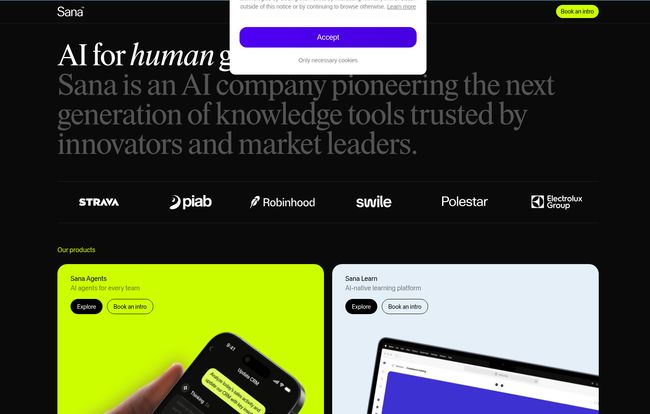
Visit Sana
The All-Seeing Eye of Analytics and Automation
For the L&D managers and team leads out there, this is your escape from spreadsheet hell. Sana provides deep analytics on engagement, completion rates, and knowledge gaps without you needing to manually crunch numbers. The AI-powered neural search is also a huge deal. It’s a private, powerful search engine for your company’s brain. An employee can ask a natural language question like “What is our Q4 policy on marketing attribution?” and get a direct answer sourced from internal documents, rather than having to bug someone on Slack.
So, Who Is Sana Really For? (A Look at the Price Tag)
This is all sounds amazing, right? A true revolution in workplace learning. But here comes the reality check: the price. This is where you separate the aspirational startups from the target audience.
Sana offers two main tiers:
- Core Plan: This gives you the whole end-to-end platform. The AI creation, the personlized learning, the live classrooms, all of it. The price is listed as $13 per license, per month. That seems incredibly reasonable... at first.
- Enterprise Plan: This adds the heavy-duty corporate features: SAML-based SSO, API access, user provisioning (SCIM), an SLA, and HR system connectors. The pricing is custom, which is standard for this level.
But there's a catch with the Core plan, and it's a big one. It requires a minimum of 300 licenses. Let’s do the quick math on that. 300 licenses at $13 each is $3,900 per month, which works out to $46,800 per year. Minimum.
So, let's be crystal clear. Sana is not for small businesses, solopreneurs, or most startups. It is a premium tool designed for established, mid-market companies (300+ employees) and large enterprises who are ready to make a significant financial investment in transforming their L&D infrastructure.
The Good, The Bad, and The AI-Powered
No tool is perfect, so let’s lay it all out.
On the plus side, the AI-driven personalization and automation is genuinely impressive. It’s a real solution to the stale, one-size-fits-all problem. The all-in-one, collaborative nature of the platform is a huge win for modern, distributed teams. And the potential time savings in content creation alone could justify the cost for the right company.
On the other hand, that 300-seat minimum is a massive barrier to entry. It immediately gates the platform off from a huge chunk of the market. The lack of transparent pricing for the Enterprise plan is a common annoyance in B2B SaaS, but an annoyance nonetheless. And we have to acknowledge the reliance on AI. The output is only as good as the input. If your source documentation is a mess, the AI will create beautifully formatted, interactive, messy courses. It requires human oversight and a commitment to good knowledge hygiene.
The Credibility Factor: Why You Should Pay Attention
Honestly, what makes me take Sana so seriously isn't just the feature list. It's the social proof. When a company like Polestar or Electrolux trusts you with their internal knowledge, you're doing something right. But it goes deeper. Their website prominently features content with some of the heaviest hitters in artificial intelligence. We're talking about people like Geoffrey Hinton, one of the “Godfathers of AI,” and Dr. Andrew Ng, the founder of Coursera and a leading voice in the field.
This isn’t just celebrity endorsement. It signals that Sana is deeply embedded in the world of serious AI research and development. They’re not just using some off-the-shelf API; they are building from a place of deep expertise. It’s the difference between a local garage and a Formula 1 engineering lab.
Frequently Asked Questions About Sana
What exactly counts as a 'user seat' or license?
Typically, in a platform like this, a user seat is any employee who needs access to the learning content. This includes creators, admins, and learners. For their pricing model, you'd be licensing a spot for each employee you want on the platform.
Can Sana integrate with my existing LMS or LXP?
Yes, the Enterprise plan is built for this. With API access and HR system connectors, the goal is to have Sana fit into your existing tech stack, not necessarily replace every single component overnight, though it certainly has the power to.
Can I bring my own content to Sana?
Absolutely. That's one of the main draws. You can upload existing SCORM files, documents, videos, and other materials. Sana's AI then helps you enhance and assemble this content into new, interactive learning experiences.
How does guest user access work?
The pricing page mentions guest access. This is likely for external training scenarios, like onboarding partners or customers. The specifics would probably be part of your plan's configuration, allowing temporary, limited access for non-employees.
Is Sana secure for sensitive company information?
For any enterprise-grade tool, security is paramount. The Enterprise plan includes features like SAML-based SSO and likely adheres to major compliance standards like SOC 2 and GDPR (especially being a Swedish company). This is a top-tier question to ask during a demo.
Is there a free trial for Sana?
Given their high-touch sales model and target market, a self-serve free trial is unlikely. Their website funnels you to “Book an intro,” which means the first step is a conversation and a personalized demo with their sales team.
The Final Verdict: My Two Cents on Sana
So, back to the original question: Is Sana the future of corporate learning, or just hype?
My verdict: It’s the real deal, but it’s a future that comes with a specific price tag and a specific set of requirements. Sana is a powerful, elegant, and incredibly intelligent platform that has the potential to genuinely transform a company’s L&D from a cost center into a strategic advantage.
It’s not for everyone. If you’re a 50-person company, this is probably out of reach for now. But if you’re a Chief Learning Officer or Head of People at a company with 300, 1000, or 10,000 employees, and you are tired of the old way of doing things? Then you should have booked a demo yesterday.
Sana is a glimpse into a future where workplace learning is not something that is done to us, but something that is built for us and with us. And that's a future I'm definitely excited about.
